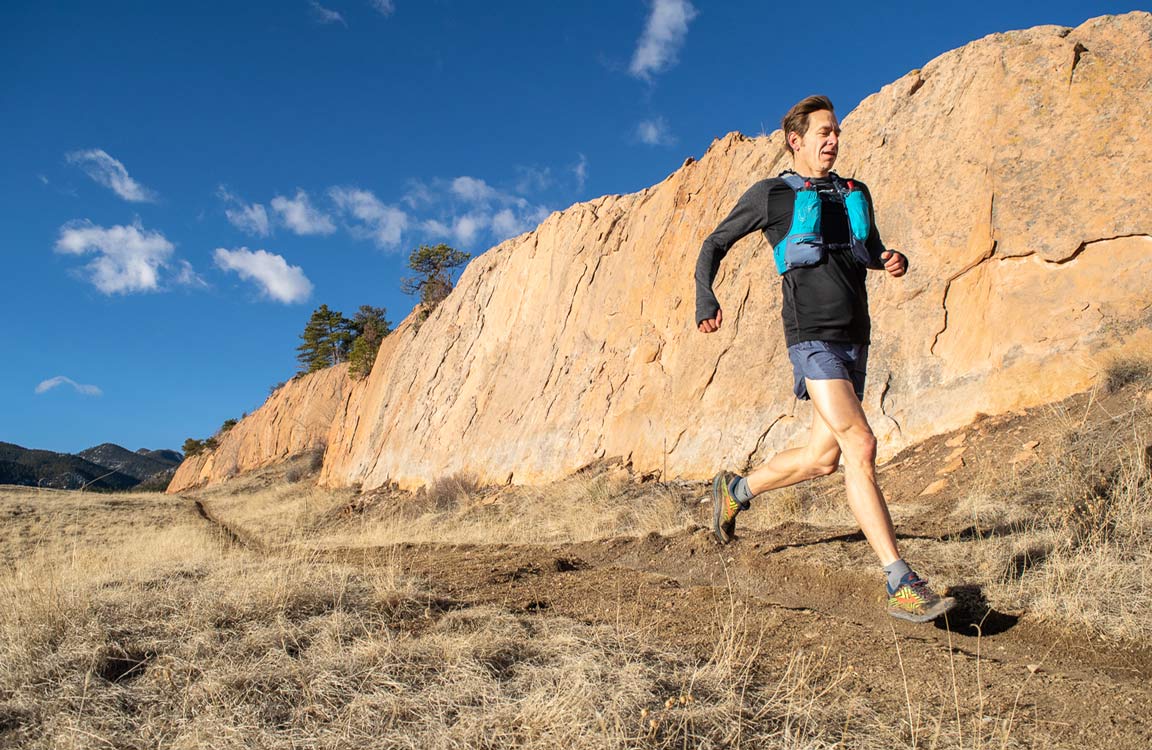
Get Your Mojo Back with These Two Mental Exercises
By Jason Koop,
Head Coach of CTS Ultrarunning
In Training Essentials for Ultrarunning, I wrote that elite ultramarathon athletes have three things in common. First off, they are tough. Nobody wins a race that lasts several hours or days solely with sheer luck, fitness or genetic talent (although the latter is one component that all elite ultrarunners share, too). There is an innate and forged toughness that all elite ultrarunners share. Second, elite ultrarunners are talented. Compared to the rest of the pack, they have a genetic ceiling for running long distances, tolerating heat, cold and high altitudes, and persevering when others cannot. Finally, elite ultramarathon runners are emotionally engaged in the process. Of these three common facets, the most important, by a long shot, is emotional engagement. It acts as a binder for the other two and catalyzes growth all at the same time. This concept is also the most difficult to grasp and explain, and admittedly I have had my fair share of difficultly with that process.
Many thought leaders and authors (myself included) have tried to explain the concept of what I call emotional engagement. The athletic, academic, coaching and business worlds are littered with books, seminars, podcasts and other media all trying to explain virtually the same thing, even if it has a different name. ‘Find your why’ is a common idiom (Simon Sineck’s excellent books are a good primer on this concept), as well as ‘What is your purpose?’. Esoteric and hippie-dippy lines of thought ensue as to finding these magical whys and purposes. Regardless of the vocabulary, we are trying to describe one common thread that weaves through success across multiple arenas. And I don’t think we do it very well, primary because we are trying to describe emotion and not tangible, tactile things.
Emotional engagement has no logic. There’s no magic formula that will tell you that A plus B will equal C. It is something that you have to feel. And because you have to feel it vs. reduce it logically, many people never quite grasp the concept. I often run into roadblocks and stagnation with athletes, but not because they have accumulated a certain number of Training Stress Score points or because they have had three very hard weeks of training. Athletes stagnate when their emotional engagement goes out the window. They falter when they have no emotional connection to what they are doing. They still have the physical capacity to improve, and they might want to improve, but they are not emotionally connected to the tasks at hand (training in this case). They will say that they’ve ‘lost their mojo’ or are ‘are just not feeling (see that word again) it’. These poorly designed catchphrases all describe the same thing; they are not emotionally engaged what they are doing.
So how do you get it back? The answer is tricky. Through the course of many years coaching, the following are two of the exercises I find most useful for getting an athlete with flailing motivation or lost mojo back on track.
Start with the small wins
There are no quick fixes in endurance training, and particularly ultrarunning. All training is chronic, meaning that it takes several weeks, not days or hours for improvement to start to tangibly show. Combine that with the fact that, in trail running, it is very hard to track progress in the first place, and you have an environment ripe for a ‘why does it matter?’ attitude. When the light at the end of the proverbial training tunnel is too far and dim to see, it is time to come back to the here and now and get some small wins on the board. How small do the wins need to be? Minuscule.
One of my athletes is a list person. She is the type that will wake up every day and make a list of every single thing she has to do, then go about the day and meticulously cross them off. When she gets a bit overwhelmed, she puts things like ‘shower’, ‘eat breakfast’ and ‘tie shoes’ just to get the ball rolling. Your small wins can follow suit. The only parameters are that they have to be actionable and practical to accomplish within the day. ‘Run one more minute’, ‘get to bed at 9’o clock’ are all small wins that you can put in your corner to get the ball rolling. It’s your job to pick the smallest one and then build from there. Small wins will turn into medium size wins and a lot of medium size wins will turn into more consistent training.
Find something that makes you cry
After you get some small wins in your corner, it’s time to really get down to the heart of the matter. What about running, competing, racing and training digs into your soul? Find the situation that creates genuine emotion and anchor into it. Use it when you want to turn around early on a run or don’t feel like rolling out of bed before the sun is up. I have some of my athletes write it down in a journal or on a post it note that they will pass frequently during the day.
► Free Ultrarunning Training Assessment Quiz
Take our free 2-minute quiz to discover how effective your training is and get recommendations for how you can improve.
I am not a crier and am generally fairly stoic by nature. In my entire adult life, I can count on one hand the number of tears I’ve shed and they have all been at funerals or my wedding. That is, except for Mile 94 in any one hundred mile race I’ve run. I have no idea why, nor do I care, but having 10 kilometers to go after running all day gets me every time. So, when I need a bit of extra emotional engagement in whatever training I am doing, I think of those moments. They bring me back to why I’m doing what I’m doing at the time and keep me engaged in the process.
Enjoying This Article? Get More Free Running Training Tips
Get our coaches' best training advice, delivered straight to your inbox weekly.
Emotional engagement is so important for an athlete’s success that I routinely encourage athletes to train for the races they care most about, even when other races are better suited to their physical abilities. Inspired, emotionally engaged athletes get more out of their training, meaning they arrive at the start line more fully prepared. And by the end of the race, the athletes who have exceeded everyone’s expectations or had breakthrough performances are almost always the ones with deep personal connections to the event and the process of training.


Comments 7
Pingback: A New Perspective On Racing – Randy's Runs
running is life for me .Running makes me to forget my worries and drifts into another world thats why i love to run.
Here’s my crying moment…
On the trail in Forest Park. It’s been foggy and cold for two hours and I come around a corner, I feel a gust of warm air. Sun rays are slanting through the fog and I realize I’m in one of “those moments” running.
It’s effortless. My feet land exactly where they are supposed to almost by magic and my breath feels like silk and there is an ear to ear smile on my face…
And the tears start. That’s why I run. 🙂
I hear you about the 100 mile cry. I have cried about an hour after both of my 100 mile races. It takes a little bit longer for the emotion to hit me, I guess. But the realization of what I just completed after months of training and planning and anxiety slowly just wells up. I hope it doesn’t go away as I do more of them. I don’t want it to feel less significant.
Thanks, Jason. I always enjoy the articles that the CTS team write and as I was reading this and pondering what I had just read, I thought I would share what it is that keeps me training. I shudder to think how long ago this happened, but it was when I was running in the forest above my uncle’s house in Peebles, Scotland. It was a particularly long uphill track and it was the first time I had run it. I kept on thinking that I was about to get to the top only to find when I got there that there was more (I’m sure you’ve been there); my legs were getting tired and I was beginning to have that familiar argument between the left and the right shoulder, (Don’t stress – you can catch up another time vs don’t stop now – No pain no gain). It was just when “the catch up another time” was about to win the internal mental argument when I experienced the “break through the wall” moment and suddenly there was no pain and my legs felt light and I felt that I could run forever. Needless to say, that is what has spurred me on ever since, but I’ve never been able to replicate it. In search of the golden fleece…
Pingback: Trail Running Daily News | Tue, Apr 9 | Ultrarunnerpodcast.com
Thanks Jason, great piece as usual. If I may add, one point I ask clients a lot in my practice is who do you seek validation from? I humbly suggest that for elite athletes, where winning or top performance is a large part of their emotional engagement, it does make a difference if you are doing it for your own good or if you seek validation from somebody else. While you can control/manage “you” with the exercises you mentioned, validation from others is out of your control and can in moments of great hardship pull you down further.